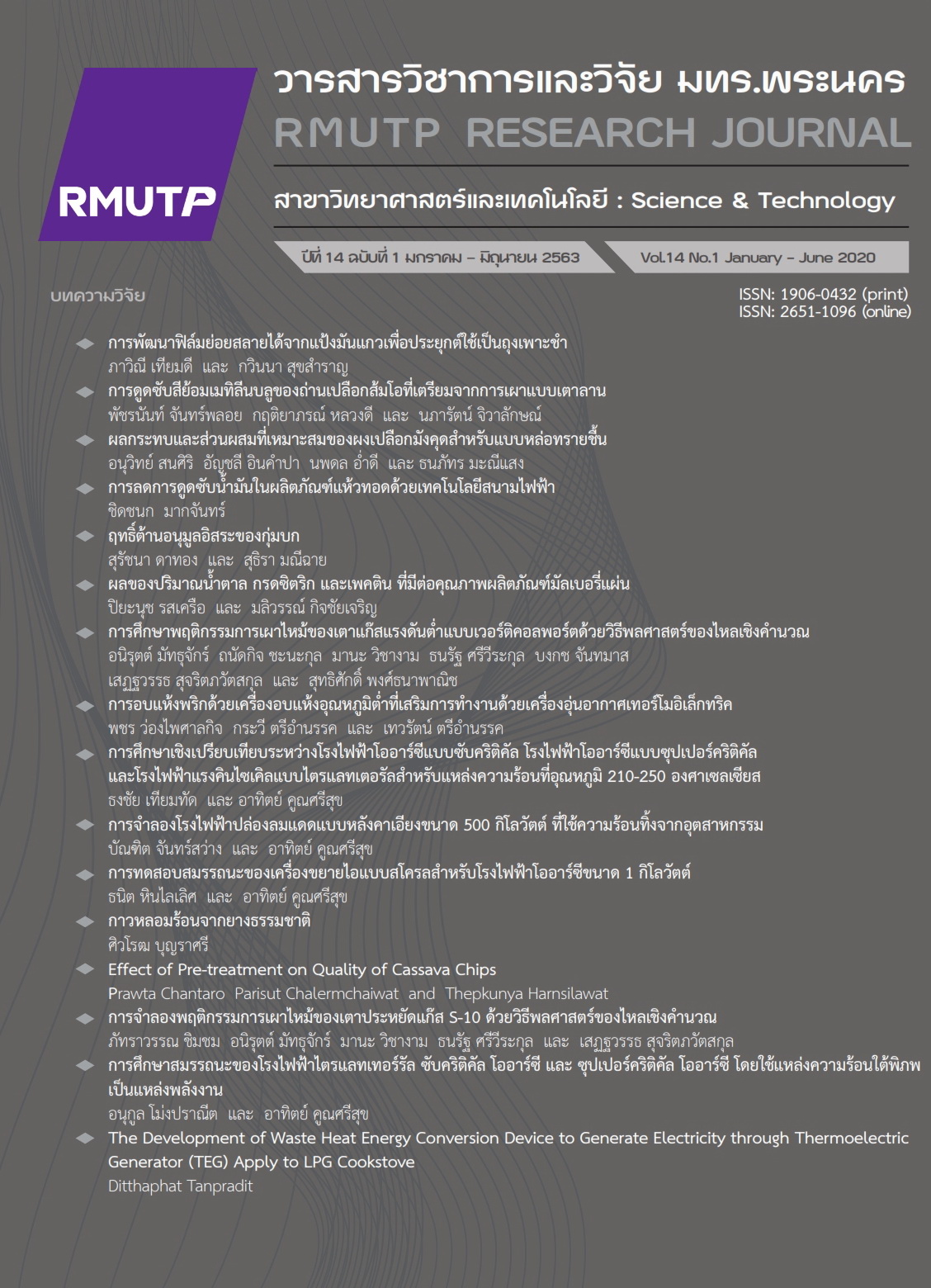Simulation on Combustion Behavior of Gas-saving Burner S-10 by Computational Fluid Dynamics
Main Article Content
Abstract
The objective of this research is to study the combustion behavior of a gas-saving burner S-10 using computational fluid dynamics (CFD). The simulation model was created using Fluent 6.3 in 3D-model of the same size of the burner. LPG pressure of 4 psi was released for this study. The combustion behavior was shown in temperature contour and velocity vector. The CFD results were verified by measuring the temperature around the burner head with a vessel. From the study, it was found that the CFD’s results of flow velocity and combustion temperature distributions were validated with the experimental values. The CFD’s result errors were less than 10.35% and 11.87%, comparing with the velocity and temperature measurement, respectively. The fluid flow and combustion behaviors can be described by this CFD model. Moreover, the CFD model of the gas-saving burner S-10 can be applied to improve the thermal efficiency of the burner in the future.
Article Details
References
Energy Policy and Planning office (EPPO) Ministry of Energy. (2018). Energy statistics of Thailand 2018. [Online]. Available: https://goo.gl/GCGy2G
L.L. Dong, C.S. Cheung and C.W. Leung, “Heat Transfer from an Impinging Premixed Butane/Air Slot Flame Jets,” International Journal of Heat and Mass Transfer, vol. 45, no. 5, pp. 979 – 992, Feb. 2002.
W. Trewetaskson, “Efficiency Improvement of LPG Domestics Cooking Stove,” M.S. thesis, Dept. Chemical. Eng., King Mongkut's University of Technology Thonburi, Bangkok, Thailand, pp. 1-92, 1998.
A. Tamir, I. Elperin and S. Yotzer, “Performance Characteristics of a Gas Burner with a Swirling Central Flame,” Energy, vol. 14, no. 7, pp. 373–382, 1989.
S. Jugjai and S. Sanitjai, “Parametric Studies of Thermal Efficiency in a Proposed Porous Padiant Recirculated Burner (PRRB): A Design Concept for the Future Burner,” International Energy Journal, vol. 18, no. 2, pp. 97–111, Dec. 1996.
U. Makmool, S. Jugjai, S. Tia, P. Vallikul and B. Fungtammasan, “Performance and analysis by particle image velocimetry (PIV) of cooker-top burners in Thailand,” Energy, vol. 32, no. 10, pp. 1986 – 1995, 2007.
P. Boggavarapu, B. Ray and R. V. Ravikrishna, “Thermal Efficiency of LPG and PNG-fired burners: Experimental and numerical studies,” Fuel, vol. 166, pp. 709 – 715, 2014.
N. Piyaprai, T. Sriveerakul and A. Namkhat, “CFD Simulation for Air-Fuel Gas Mixing Flow in Mixing Tube of a KB-5 Cooking Burner,” in Proceeding of 27th Conference of Mechanical Engineering Network of Thailand, Chon Buri, Thailand, 2013, Paper no. CST-2032.
PTT Public Company Limited. (2012). What is natural gas?. [Online]. Available: https://goo.gl/
mrw7S


